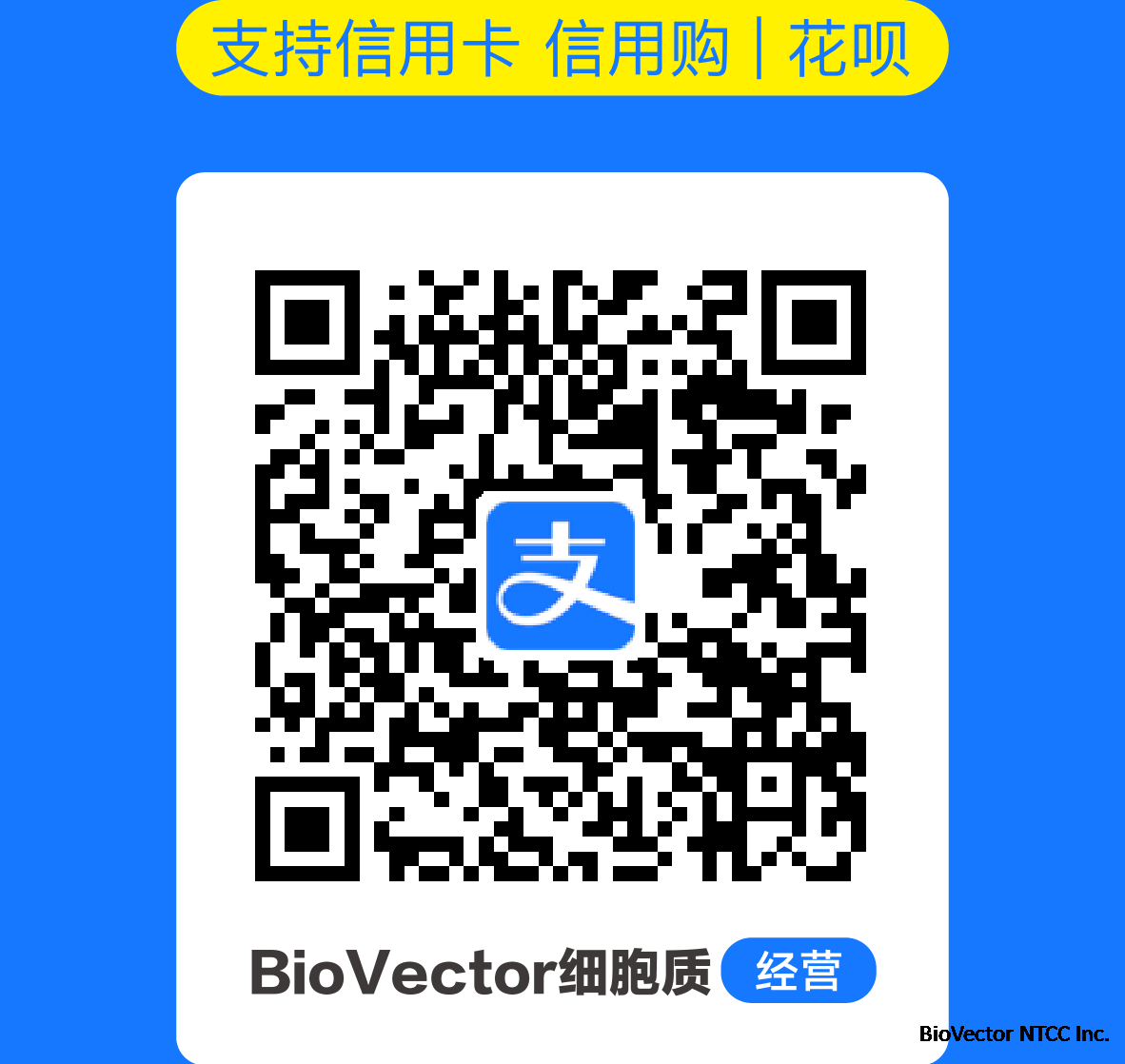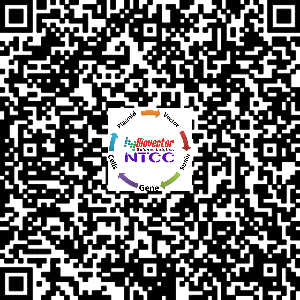GT1-7 Mouse Hypothalamic GnRH Neuronal Cell Line小鼠下丘脑GnRH神经细胞株 BioVector NTCC质粒载体菌种细胞基因保藏中心
- 价 格:¥896535
- 货 号:GT1-7 Mouse Hypothalamic GnRH Neuronal Cell Line小鼠下丘脑GnRH神经细胞株
- 产 地:北京
- BioVector NTCC典型培养物保藏中心
- 联系人:Dr.Xu, Biovector NTCC Inc.
电话:400-800-2947 工作QQ:1843439339 (微信同号)
邮件:Biovector@163.com
手机:18901268599
地址:北京
- 已注册
GT1-7 Mouse Hypothalamic GnRH Neuronal Cell Line小鼠下丘脑GnRH神经细胞株 BioVector NTCC质粒载体菌种细胞基因保藏中心
Description GT1-7 Mouse Hypothalamic GnRH Neuronal Cell Line
Overview GT1-7 is an immortalized mature mouse hypothalamic GnRH neuronal cell line. Immortalized GnRH neurons were generated by introducing a transgene containing the promotor region of the GnRH gene coupled to the coding region of the SV40 T-antigen oncogene into transgenic mice1. The resulting anterior hypothalamic tumors were removed from one of the mice and the cells dissociated and cloned. GT1-7 is a clonal line of mature differentiated GnRH neurons that exhibit high levels of Gnrh1 mRNA and secrete GnRH in response to depolarization.
Alternate Names • GT1-7 hypothalamic cell line
• GT1-7 neural cell line
Background Information Gonadotrophin-releasing hormone (GnRH) is a neuropeptide that is synthesized and released from GnRH neurons within the hypothalamus and is required for normal reproductive development and function. The scarcity and scattered distribution of GnRH neurons in the rostral hypothalamus make the biological study of the cells difficult.
References:
1. Mellon PL, et.al. (1990) Immortalization of hypothalamic GnRH neurons by genetically targeted tumorigenesis. Neuron 5(1): 1-10.
2. Liposits Z, et.al. (1991) Morphological characterization of immortalized hypothalamic neurons synthesizing luteinizing hormone-releasing hormone. Endocrinology 129(3): 1575-1583.
3. Wetsel WC, et.al. (1991) Metabolism of pro-luteinizing hormone-releasing hormone in immortalized hypothalamic neurons. Endocrinology 129(3): 1584-1595.
4. Wetsel WC, et.al. (1992) Intrinsic pulsatile secretory activity of immortalized luteinizing hormone-releasing hormone-secreting neurons Proc. Natl. Acad. Sci. USA 89(9): 4149-4153.
5. Whyte DB, et.al. (1995) A neuron-specific enhancer targets expression of the gonadotropin-releasing hormone gene to hypothalamic neurosecretory neurons. Mol. Endocrinol 9(4): 467-477.
Applications
Application GT1-7 cells can be used as an in vitro model of GnRH-secreting neurons of the hypothalamus.
Key Applications • Cell Culture
• Cell Based Assays
Biological Information
Cell Line Type • Neural Lineage Cells
Comments Transformant: Simian virus 40 (SV40).
Misspelling: GTI-7; Occasionally.
Species of origin Mus musculus (Mouse)
Breed/subspecies: (C57BL/6J x BALB/cJ) F2.
Hierarchy Parent: (GT1)
Children:
(GT1-7-OX1)
Category Transformed cell line
GT1-7 cells were subset strains of GT1 celllines, which were GnRH neuron cell line isloated from the hypothalamus oftransgenic mice and had the typical characteristics of highly differentiatedneuroendocrine cells. GnRH synthesis and release in hypothalamus played animportant role in reproductive function. However, GnRH neurons were onlythousands and discrete distribution in the brain, which leads more difficultiesin studying in vivo. Currently, GT1-7 cell was widely using inreproduction-related research works as an ideal GnRH cell model in vitro.
GT1-7细胞是GT1细胞株的亚株,通过转基因技术从小鼠下丘脑分离获得的GnRH神经元细胞系,具有高度分化的神经内分泌细胞典型特征.下丘脑GnRH合成和释放对生殖功能具有重要作用,而GnRH神经元在脑内数量少且呈弥散分布,体内研究较困难.目前,GT1-7细胞是研究GnRH神经元的理想离体细胞模型,在生殖相关研究中广泛使用
Cell Line: | GT1-7 | |
Species: | Mus musculus | |
Tissue: | Brain | |
Morphology: | Fibroblast | |
Growth Properties: | Adherent | |
Derivation: | The GT1-7 line was immortalized by expression of SV40 T antigen oncogene in hypothalamic GnRH neurons. | |
Products: | GnRH - Gonadotropin-Releasing Hormone. | |
Biosafey: | 2 | |
Additional info: | GT1-7 cell line is sensitive to trypsin and low confluence. | |
Culture Medium: | Dulbecco's modified Eagle's medium with 4 mM L-glutamine adjusted to contain 1.5 g/L sodium bicarbonate and 4.5 g/L glucose, 90%; fetal bovine serum, 10%. | |
Subculturing: | Remove and discard culture medium. Briefly rinse the cell layer with PBS without calcium and magnesium to remove all traces of serum that contains trypsin inhibitor. Add 2.0 to 3.0 mL of Trypsin-EDTA solution to flask and observe cells under an inverted microscope until cell layer is dispersed (usually within 5 to 15 minutes). Note: To avoid clumping do not agitate the cells by hitting or shaking the flask while waiting for the cells to detach. Cells that are difficult to detach may be placed at 37°C to facilitate dispersal. Add 6.0 to 8.0 mL of complete growth medium and aspirate cells by gently pipetting. Add appropriate aliquots of the cell suspension to new culture vessels. Incubate cultures at 37°C. Doubling time: 36 hours NOTE: For more information on enzymatic dissociation and subculturing of cell lines consult Chapter 12 in Culture of Animal Cells, a manual of Basic Technique by R. Ian Freshney, 6th edition, published by Alan R. Liss, N.Y., 2010. | |
Culture Conditions: | Atmosphere: air, 95%; carbon dioxide (CO2), 5% Temperature: 37°C | |
Cryopreservation: | 95% FBS + 5% DMSO (Dimethyl sulfoxide) | |
Thawing Frozen Cells: | SAFETY PRECAUTION: Is highly recommend that protective gloves and clothing always be used and a full face mask always be worn when handling frozen vials. It is important to note that some vials leak when submersed in liquid nitrogen and will slowly fill with liquid nitrogen. Upon thawing, the conversion of the liquid nitrogen back to its gas phase may result in the vessel exploding or blowing off its cap with dangerous force creating flying debris. 1. Thaw the vial by gentle agitation in a 37°C water bath. To reduce the possibility of contamination, keep the Oring and cap out of the water. Thawing should be rapid (approximately 2 minutes). 2. Remove the vial from the water bath as soon as the contents are thawed, and decontaminate by dipping in or spraying with 70% ethanol. All of the operations from this point on should be carried out under strict aseptic conditions. 3. For cells that are sensitive to DMSO is recommended that the cryoprotective agent be removed immediately. Transfer the vial contents to a centrifuge tube containing 9.0 mL complete culture medium and spin at approximately 125 x g for 5 to 7 minutes. 4.Discard the supernatant and Resuspend cell pellet with the recommended complete medium (see the specific batch information for the culture recommended dilution ratio). 5. Incubate the culture in a appropriate atmosphere and temperature (see "Culture Conditions" for this cell line). NOTE: It is important to avoid excessive alkalinity of the medium during recovery of the cells. It is suggested that, prior to the addition of the vial contents, the culture vessel containing the growth medium be placed into the incubator for at least 15 minutes to allow the medium to reach its normal pH (7.0 to 7.6). | |
References: | Nelson SB, LAwson MA, Kelley CG, Mellon PL (2000) "neuron-specific expression of the rat gonadotropin-releasing hormone gene is confered by interactions of a defined promoter with the enhacer in GT1-7 cells". Mol Endocrinol 14 (9): 1509-22. Mellon, P.L., Windle, J,J., Goldsmith, P., Pedula, C., Robets, J. and Weiner, R.I. 1990. Imortalization of hypothalamic GnRH neurons by genetically targeted tumorigenesis. Neuron 5: 1-10. Liposits, Z., Mechenthaler,I., Westel, W.C., Reid, J. J., Mellon, P. L., Weiner, R.I. and Negro-Villar, A.1991. Morphological chaacterization of immortalized hypothalamic neurons synthesizing luteinizing hormone-releasing hormone. Endocrinol. 129: 1575-1583. Wetsel, W.C., Valença, M.M., Merchenthaler, I. Liposits, Z., López, F.J., Weiner, R.I., Mellon, P.L. and Negro-Villar, A. 1992. Intrinsic pulsatile secretory activity of immortalized luteinizing hormone-releasing hormone-secreting neurons. Proc. Natl. Acad. Sci. USA 89:4149-4153. Whyte, D. B., Lawson, M.A., Belsham,D. D., Eraly, S.A. Bond, C.T., Adelman, J. P., and Mellon, P.L. 1995. A Neuron-Specific Enhancer Targets Expression of the Gonadotropin-Releasing Hormone Gene to Hypothalamic Neurosecretory Neurons. Molecular Endocrinology 9, 467-477. |
【Supplier来源】BioVector NTCC Inc.
TEL:+86-010-53513060
【Website网址】 http://www.biovector.net
- 公告/新闻



 免费订购电话: 400-800-2947
免费订购电话: 400-800-2947